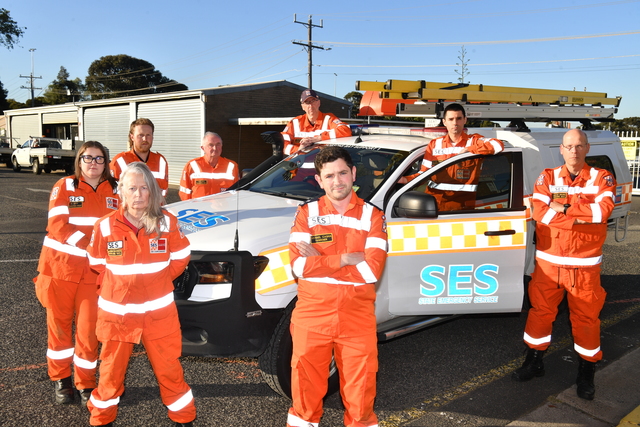Victoria State Emergency Service (SES) volunteers have been left disappointed with the recent state budget, which delivered less money for the volunteer organisation than expected.
Fawkner unit deputy controller Michael Casha said although each unit receives a small subsidy from the state government, it always falls “drastically” short and is felt across the organisation, especially in the north-west.
“Within Melbourne’s north-west, there are units with no state government-provided vehicles meaning they simply wouldn’t be able to get out on the road if it weren’t for volunteers chasing donations and funding their vehicles,” he said.
In addition to receiving second-hand uniforms for new members and not having enough money for required truck licences and training, Mr Casha said the VICSES Hobsons Bay Unit in Altona is not fit for purpose.
“The Altona unit is within a shared council facility, they do not have dedicated parking for volunteers who sometimes have to park minutes down the road when responding to emergencies,” he said.
“Their building is not fit-for-purpose and even sustained storm damage while responding to the community.”
Although $7 million in funding for the SES was announced in the budget, Mr Casha said once broken down the funding is not what it seems.
“Nearly $5 million of this is simply a reallocation of existing funds within the SES budget,” he said.
“And an additional half-million is spread over four years for an existing training program.”
Mr Casha said this leaves a little over $1 million in new funding for VICSES in 2024-2025.
“While we appreciate any support, this falls short of what’s needed to address the ongoing strain on our volunteers and our infrastructure,” he said.
“Whilst our volunteers are the heart of VICSES, they shouldn’t have to be the wallet too.”
Mr Casha said the 4956 volunteers are coming off the biggest three years they have ever had and cannot rely on current fundraising methods.
“We are not asking for a handout, we are asking for a sustainable funding model that will immediately see a redirection of hours currently spent chasing donations, into more training and increased operational response,” he said.
“VICSES relies heavily on volunteer-led fundraising to maintain equipment, facilities, and source and replace vehicles, something which is unsustainable.
“The forecasts show no signs of slowing, we need a sustainable funding model.”
Worried that the lack of funding will drive volunteers away, Mr Casha said hours which should be spent rescuing are being used for fundraising.
“Every volunteer has a set amount of hours that they are able to give to VICSES,” he said.
“But what we’re seeing more and more, is those hours being consumed by volunteers having to fundraise.
“We want volunteers to be able to hold chainsaws and rescue tools, not chase donations.”
A state government spokesperson said that the VICSES has been given $111 million in the last three years in terms of vital funding.
The state government disputed the claim that only $1 million of the $7 million was new funding, but did not provide any further clarification.







